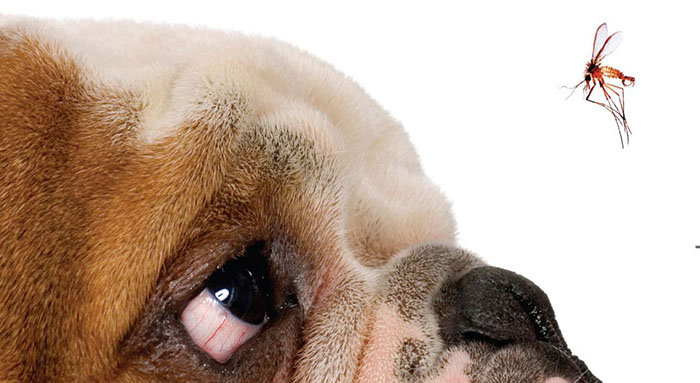Leishmaniasis is an important disease of dogs that is endemic in the Mediterranean areas of Europe and, unfortunately, in this part of Spain the prevalence of the disease is very high. The agent responsible for this is a parasite called Leishmania infantum. At the present leishmaniasis is restricted in the UK to dogs that have been imported from endemic areas. However, with the lifting of quarantine and increasing mobility of owners and their dogs, the prevalence of this disease in the UK is likely to increase.
The disease is transmitted by a special sandfly, mainly in summer during August and September. The females of this sandfly can be infected by taking a bloodmeal from an infected dog. When this sandfly then bites another dog it passes the Leishmaniasis on. The parasite affects organs such as the liver and the kidneys, and the health of the dog starts to be seriously damaged.
Clinical signs
In endemic areas, dogs are exposed at a very early age. Some develop protective immunity, some develop subclinical infections that may relapse later and other develops the classic clinical syndrome. The disease has a waxing and waning course and there is usually a history of non-specific lethargy, anorexia and being very thirsty. On physical examination the following are common:
-Fever
-Weight loss
-Enlarged lymph nodes
-Pale mucous membranes
-Exfoliative/ulcerative/nodular Dermatitis
-Alopecia around the eyes. (Hair loss)
-Skin on foot pads become very thick
-Excessive growth of claws
-Shifting lameness (due to polyarthritis)
-Nose bleeding.
The cutaneous signs are very common, and the exfoliative dermatitis produces a characteristic silvery scale that is prominent on the nose, around eyes and pinnae.
As you can see, there are many different signs that show if a dog has Leishmaniasis but the only way to confirm this is to have a blood test carried out.
We do recommended a yearly blood test leishmania and for other potentially deadly diseases that our pets can get in this part of the world. The best care we can provide it is the prevention.
Prevention
We also have to consider a very important factor in this disease and it is the fact that this could be transmitted potentially to people although the affected people are normally individuals with their immune system compromised.
The only way to prevent this disease is to treat the animal with something that acts against the bite of the sandfly. There are different products in the market effective against the sandfly bite; some of them are spot-on drops others are collars.
We will do a personal protection plan for your dog; each dog is different, so needs different care.
Treatment
The disease can not be cured, but there are treatments available that can stop the process. The dog has to be assessed and treated by a vet and also has periodic blood checks to monitor improvement.
In most of the cases if we do an early diagnosis the prognosis is good, for this it is very important to do annual blood test.




